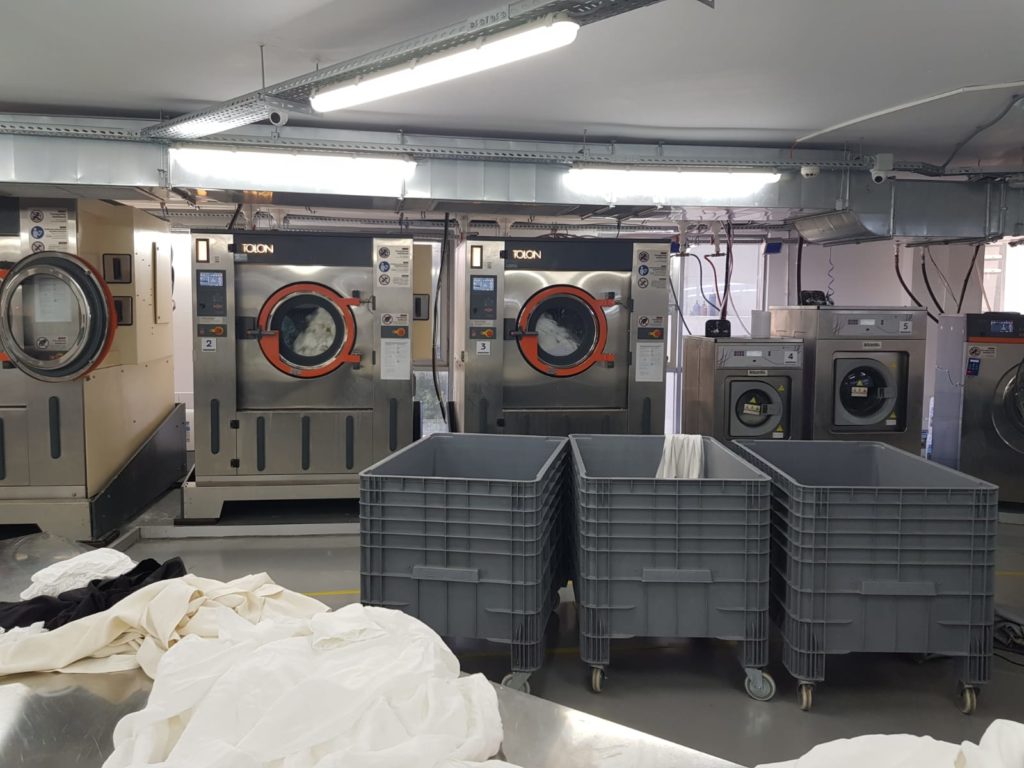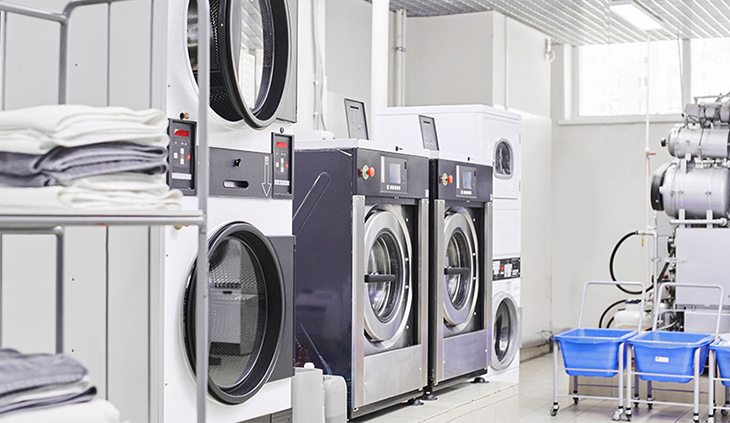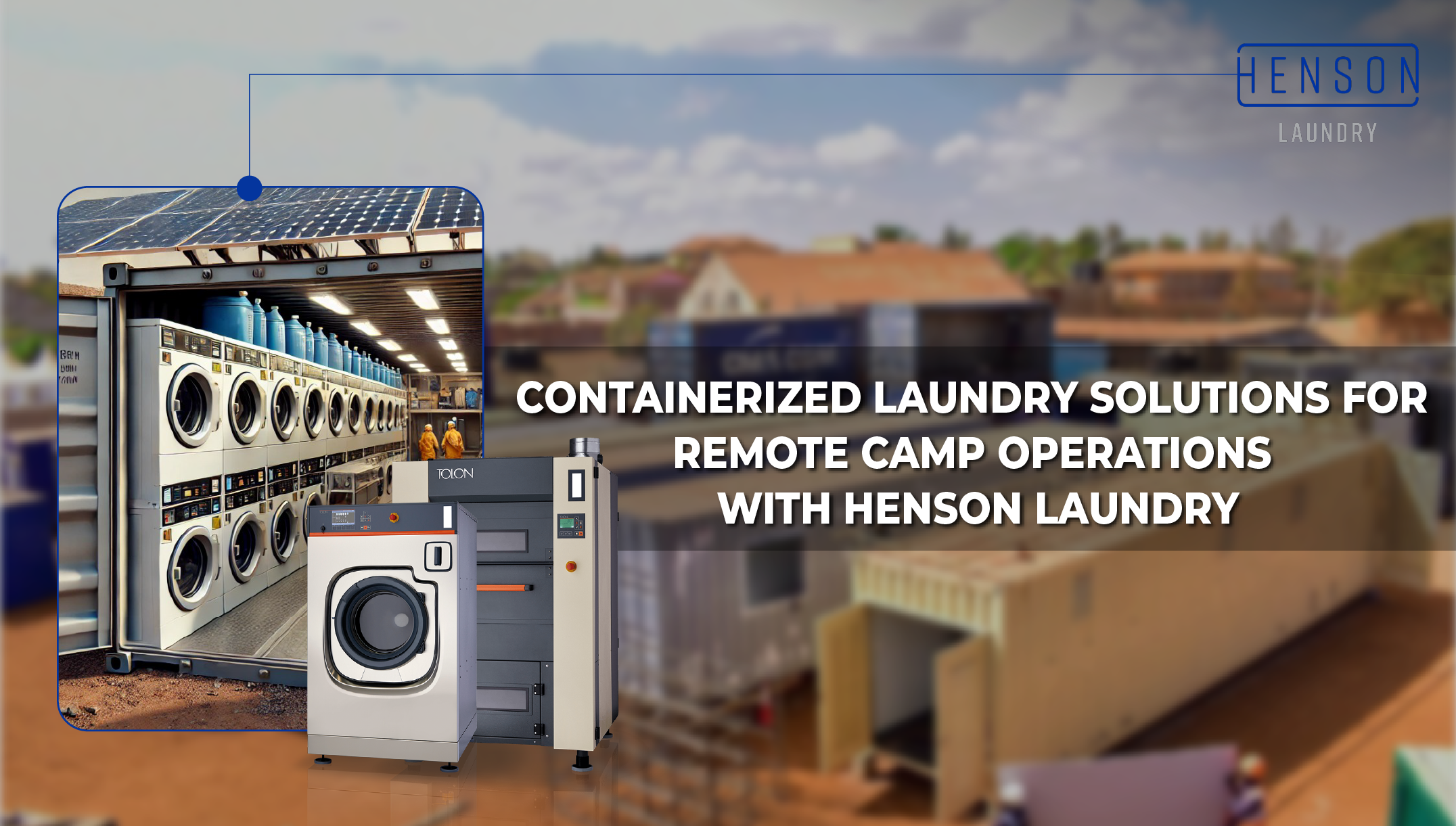Laundry equipment for hospitals requires a wide range of technology that may help optimize the washing process while conserving both power and water. These savings are frequently one of the deciding factors that lead hospital management to choose one service over another, along with the quality of washing, because the hospital employees and patients will notice the difference when wearing clean clothing and linens.
In hospitals and health centers, sensitivity is also a critical consideration, as these environments require strict adherence to hygiene and contamination standards. Identifying the source of pathogens’ presence and ensuring complete infection control are two major cases that guide the health center to a proper level of hygiene for this type of facility.

Designing the space in which to install the laundry equipment in a hospital
It is critical that the hospital’s administration create a department with highly qualified personnel in charge of managing the laundry equipment and services that can be provided with it.
These services are sometimes monetized by providing them to the general public in addition to the medical service. This may lead to a departure from the service’s aim and an increase in the danger of nosocomial infections or contagion. The washing equipment installation should be strategically positioned in a well-ventilated region that has been thoroughly analyzed in advance to avoid any potential installation faults.
The department heads and laundry crews are responsible for more than just keeping the hospital’s garments and linings clean. They must also make decisions such as which fabrics are more appropriate, which type of bed linings should be purchased, and how many spare units of each product the hospital should have, as well as keep up-to-date registers and accounting in order to analyze the performance of the center’s operations and services. The personnel must also collect soiled clothes from both employees and patients, clean, classify, and return them to the appropriate departments.
Activity Schedule
The laundry personnel’s task log should provide management with information about what happens in the hospital: changing linings, picking up dirty clothes, classifying them, identifying and cleaning stains and blood, disinfection, cleaning, drying, ironing, and returning the products to the appropriate hospital department.
Because the majority of these chores must be completed on a daily basis, it is recommended that you create a schedule.

Using the Right Laundry Equipment for Efficiency
So that daily operations do not suffer, the hospital should always have appropriate laundry equipment. When choosing the correct equipment, it’s not only important that the garments are spotless, but also that the team’s efficiency and production improve. Washer extractors, chemicals injectors, dryers, irons, stands, tables, and other laundry equipment are included.
Choosing the correct machines will allow employees to work considerably more quickly and efficiently. Washer extractors can also improve efficiency by decreasing the drying process by up to 70% and substantially cutting power consumption.
Chemical injectors can also be used to detect stains in blood or other liquids. These chemicals are appropriate and preferred over cleaning these stains manually, as they do it faster and with lower power consumption.
Sanitary barrier washers can be installed even in small installations, passing through the wall with a double door, where filthy clothes are deposited on one side and clean clothes are collected on the other. This will aid in the separation of soiled and contaminated clothing from clean clothing.
High-spinning barrier washers are widely recommended because they provide effective germ protection thanks to their divided and opposed doors, which ensure that unclean and clean clothes do not come into touch.
Finally, a hospital’s laundry equipment must meet a variety of requirements and qualities that meet both the needs of the center and the established hygienic standards.










0 Responses
We are looking for 50 Machines of this type, do you have them:
Laundry Washing Machines for Community Hospitals, Heavy duty Dryer, Laundry • Capacity must be between 32 and 42 kg • Front loading, automatic opening and closing • Automatic touch screen control • Auto operation, electronic controlled from panel: with safety alarm and auto stop • Three phase power, 415 Vac, 50Hz. Power cable length: not less than 3 metres, 10 mm 4 core • Electrically heated • All valves should be electrical, solenoid • Rotary drying tumbler, • Temperature controlled with cool down, timer 60 minutes Accessories • Heating elements x 2 sets.
Hello Frazer, Thank you for reaching out. Our sales team will reach out to you asap with more details.